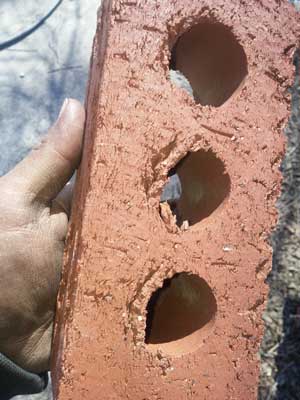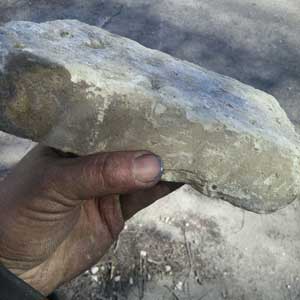Can't find where the leak is coming from?
Disclaimer:
These problems are meant to be examples of the common ways chimneys can leak from my past experiences. Any of these examples or none of these examples may apply to your chimney. Always contact a licensed chimney expert for your particular chimney leaking problems.
This type of leak is one of the hardest to find and/or diagnose. Imagine this scenario.. You have a leak in the chimney, but it only leaks after it has been raining for a long period of time, or heavy rains, or even short windy rains.. You have checked the flashings, they are good. You have checked the concrete cap, it is good. You have checked the brick and mortar and it appears to have no holes or ways for water to get in. "What is going on?" you might ask yourself. Everything appears to be good with the chimney. Every year people spend a ton of money trying to diagnose these types of leaks.
Mass Absorbtion of Water
 Brick and mortar can absorb water. During heavy or long term rains, enough water can be absorbed into the chimney to saturate the chimney structure. Just like bad or deteriorated mortar joints as described above, water will eventually be affected by gravity and can get pulled down into the house.
Brick and mortar can absorb water. During heavy or long term rains, enough water can be absorbed into the chimney to saturate the chimney structure. Just like bad or deteriorated mortar joints as described above, water will eventually be affected by gravity and can get pulled down into the house.
As you can see by the picture above, some brick have not only structural holes in them, but small porous holes also. When mortar absorbs water. The water can get trapped in the pores of the brick and cause the chimney to deteriorate and cause a leak.
 In the case of older reclaim types of brick, reclaim brick can absorb large amounts of water in a short amount of time. This is usually the result of the soft porous clay used in the original manufacture of the brick. With these type of brick, it is important to keep up a regular maintainence schedule.
In the case of older reclaim types of brick, reclaim brick can absorb large amounts of water in a short amount of time. This is usually the result of the soft porous clay used in the original manufacture of the brick. With these type of brick, it is important to keep up a regular maintainence schedule.
